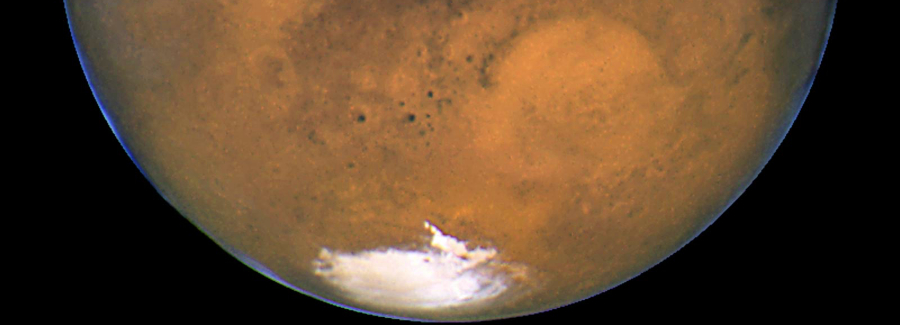| Stargazing 101: Oppositions vs Conjunctions (2022-12-11) ⬅︎ |
 |
Let's say you'd like to see the planet Mars through a telescope and hope to see its red surface, giant volcanoes, enormous canyons and polar ice caps at their best. You know you need to time your viewing just right but aren't sure if the best views are at oppositions or conjunctions. Maybe this drawing will help you decide...
Did you answer oppositions are best? With an opposition, the Sun and Mars are on opposite sides in our sky so Mars is visible all night, and being close, it will appear larger and brighter. With a conjunction, the Sun and Mars are on the same side of our sky so Mars is out all day making it pretty tough to see. Stargazers learn that oppositions can be 'show-stopper' events while conjunctions are 'no-show' events.
A great way to understand all this is to watch Mars go through its 26-month cycle from opposition to conjunction to opposition. The video below shows this in two ways... on the left, watch Mars from space as it goes from being close, to far and then close again; on the right, watch Mars from Earth as it goes from being big, to small (and blocked by the Sun) and then big again.
By the way, did you notice Mars moving backwards in our sky around both oppositions? This is known as retrograde and is an illusion caused by Earth's motion as it passes Mars. All the planets appear to go backwards at times and early stargazers were completely baffled by this... if only they had understood that Earth moves too.
Do all of the planets have oppositions? No. Only the superior planets do -- the ones after Earth -- as this chart shows:
| Planets with Oppositions | Time between Oppositions |
| Mars | 26 months |
| Jupiter | 13 months |
| Saturn | 12.5 months |
| Uranus | 12.2 months |
| Neptune | 12.1 months |
Notice that Mars has oppositions about every two years while the other planets have oppositions about every year. Why? The further a planet is from the Sun, the slower it is in its orbit around the Sun and the less time that is needed for Earth to catch up to and pass it.
Are all oppositions of a planet equal? No. Since the orbits of planets are elliptical and not circular, the distance of Earth to the planet can vary a lot from one opposition to the next as this drawing of Mars' oppositions to 2035 shows:
In summary, when it comes to viewing a superior planet, avoid times around conjunctions since the planet is too close to the Sun in our sky to be visible. For the best views, plan for times around oppositions when the planet is visible all night and at its largest and brightest in our sky. Clear skies!
|
| |



